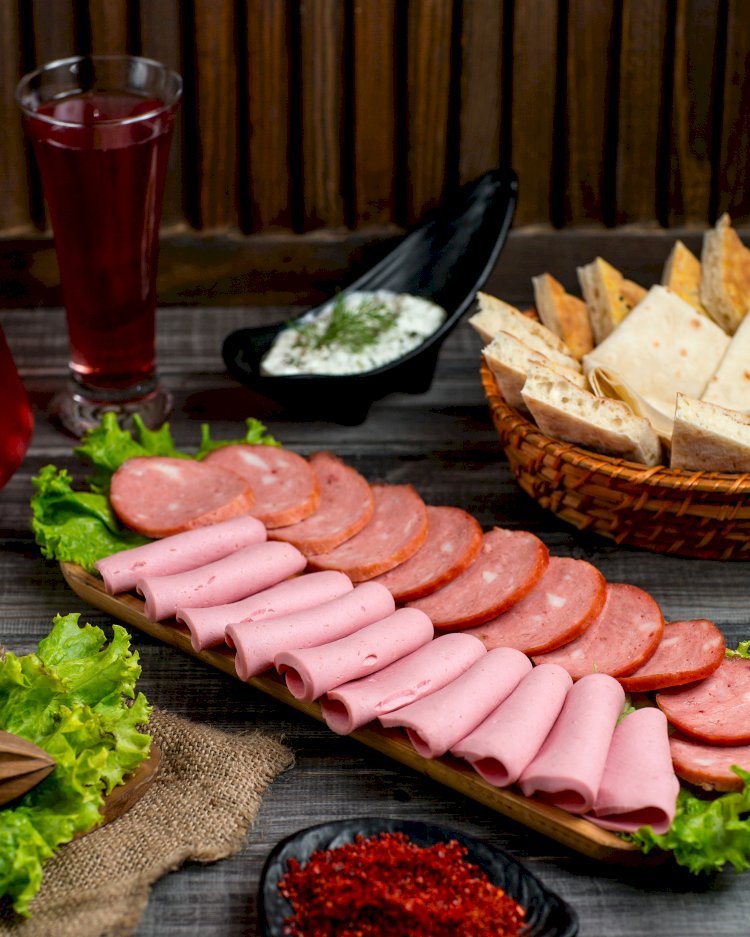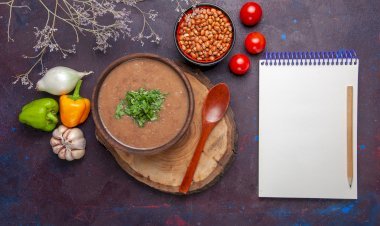Homemade Canadian Back Bacon Recipe – Cure, Smoke, and Slice Like a Pro
Learn how to smoke or cook homemade Canadian back bacon with step-by-step instructions for both smoker and oven methods. Perfect for bacon lovers who want authentic, flavorful results at home.

Canadian back bacon is a lean, protein-packed choice made from pork loin with far less fat than belly bacon. Discover how to make your own healthier, budget-friendly version at home with simple steps.
If you enjoy bacon’s smoky flavor but could do without the grease, Canadian back bacon is worth a try. Unlike strips made from fatty pork belly, this cut comes from pork loin—naturally leaner, high in protein, and much lower in saturated fat. That difference makes it a smarter option for anyone who wants the taste of bacon without the heaviness.
While packaged versions are easy to find, many are overly salty, loaded with preservatives, and surprisingly expensive. Making your own at home is not only simple but also gives you full control over flavor, salt levels, and smoking style.
In this step-by-step guide, we’ll show you how to select pork loin, prepare a proper cure, and cook it in the oven or smoker until it’s ready to slice. The result? A healthier bacon alternative that’s versatile enough for breakfast, sandwiches, or meal prep—and tastes even better than most store-bought options.
What Is Canadian Back Bacon and Why Is It So Popular?

Canadian back bacon is made from the pork loin—the same tender, lean muscle that runs along the back of the pig. This distinguishes it from the more familiar belly bacon, which is fattier and crisps up when fried. Back bacon, by contrast, is firmer, meatier, and significantly lower in fat, making it a healthier option for those watching their intake.
In Canada, a well-known variety called peameal bacon is especially popular. It’s cured, unsmoked, and traditionally rolled in cornmeal, giving it a golden crust when cooked. In the U.S., however, Canadian bacon is usually sold pre-cooked, smoked, and sliced—more like a ham steak than traditional bacon strips.
So, why do people love it? Its mild, smoky-sweet flavor, low sodium, and minimal grease appeal to health-conscious eaters. It also holds its shape during cooking—no curling, shrinking, or excessive splatter—making it perfect for breakfast sandwiches, eggs Benedict, or even as a lean pizza topping.
Whether you're cutting back on fat or just craving a refined, protein-packed alternative to belly bacon, Canadian back bacon delivers satisfying flavor with a wholesome twist.
Ingredients and Supplies You’ll Need to Make Homemade Canadian Back Bacon
Before you dive into curing and smoking, it’s essential to gather the right ingredients and tools. Preparation is key to achieving that classic, flavorful Canadian back bacon.
Main Ingredient
-
Pork Loin (3–5 pounds)
Use a boneless, center-cut pork loin, fully trimmed of excess fat. Avoid pork tenderloin, which is too small and lean for proper curing and won’t deliver the right texture or flavor.
Essential Curing Ingredients
-
Kosher Salt
Provides the proper level of salinity and is ideal for consistent curing. -
Sugar (White or Brown)
Balances the saltiness and adds a subtle sweetness. Brown sugar offers a deeper, molasses-like flavor. -
Pink Curing Salt (Prague Powder #1)
Contains sodium nitrite, crucial for food safety, color retention, and that signature cured flavor. Use precisely as directed (typically 1 tsp per 5 lbs of meat). -
Water
Use filtered or distilled water to make the brine. Avoid tap water with high mineral content, which can affect the cure.
Optional Flavor Boosters
Add complexity and customize the taste with these optional aromatics:
-
Garlic (fresh cloves or powder) – Adds rich, savory notes
-
Black Peppercorns – A gentle, warming spice
-
Bay Leaves – Offer a subtle earthiness
-
Maple Syrup or Honey – For a touch of natural sweetness and classic Canadian flavor
Tools & Equipment Checklist
-
Food-Safe Container or Large Zip-Top Bag
Needed to fully submerge the pork loin in the curing brine. -
Smoker or Oven
A smoker is ideal for adding rich, wood-fired flavor. If unavailable, a low-temperature oven (around 200°F) can still yield great results. -
Meat Thermometer
Essential for food safety—ensure the internal temperature reaches 150°F. -
Sharp Knife or Meat Slicer
For clean, even slices once the bacon is fully cooked and rested. -
Paper Towels
Used to pat the pork dry after curing and rinsing. -
Wire Rack and Tray
Allows airflow to develop the pellicle—a tacky surface that helps smoke adhere better during cooking. -
Cornmeal (Optional)
For traditional peameal bacon, roll the cured pork loin in cornmeal before cooking instead of smoking.
Pro Tip:
Set everything up before you begin. Having all ingredients and tools ready makes the process smoother and more enjoyable—and helps ensure your bacon turns out flavorful and safe to eat.
How to Cure the Pork Loin Properly

Curing is the most crucial step—it not only preserves the meat but also builds that signature bacon flavor. Here’s how to do it like a pro:
Step 1: Prepare the Brine
In a large container, mix the following ingredients until fully dissolved:
- 1 gallon of cold water
- ¾ cup kosher salt
- ½ cup granulated sugar
- 1 teaspoon pink curing salt (Prague Powder #1)
For added depth of flavor, you can stir in optional extras like:
- ¼ cup maple syrup or honey
- A few cloves of crushed garlic
- Whole peppercorns, bay leaves, or your favorite herbs
This flavorful brine will infuse the meat with savory-sweet notes and essential curing agents.
Step 2: Submerge the Pork
Place the trimmed pork loin into the brine, making sure it’s completely submerged.
Pro Tip: If the loin floats, place a clean plate or a food-safe weight on top to keep it fully immersed.
Step 3: Cure in the Fridge (5–7 Days)
Refrigerate the container for 5 to 7 days.
Turn the pork once per day to ensure even curing on all sides and full flavor penetration.
Step 4: Rinse and Dry the Loin
After curing:
- Remove the pork from the brine.
- Rinse it thoroughly under cold running water to wash off excess salt.
- Pat the meat dry with paper towels.
Then, place it uncovered on a rack in the refrigerator overnight. This forms a pellicle—a tacky surface that helps smoke cling more effectively during cooking.
How to Smoke or Cook Canadian Back Bacon

After curing and drying your pork loin, it's time to bring out its full flavor through smoking or baking. Here's how to do it like a pro:
Smoking Method (Best for Authentic Flavor)
- Preheat your smoker to 200°F (93°C).
- Choose your wood chips: Applewood gives a sweet, mild flavor, while hickory adds a deeper, smokier taste. You can also experiment by mixing both.
- Smoke the pork until the internal temperature reaches 150°F (65°C). This usually takes about 3 to 4 hours, depending on the thickness of the meat and ambient temperature.
Tip: Use a digital meat thermometer to monitor doneness without opening the smoker too often, which can drop the temperature.
Oven Method (Great for Indoor Cooking)
Don’t have a smoker? No worries—you can still make delicious back bacon in the oven:
- Preheat your oven to 200°F (93°C).
- Place the cured pork loin on a rack set over a baking sheet to allow air circulation and even cooking.
- Bake until the internal temperature reaches 150°F (65°C). This will take approximately 3–4 hours.
Tip: Add a small pan of water to the bottom of the oven to help retain moisture.
Rest Before Slicing
Once the bacon is fully cooked:
- Remove it from the heat and let it rest for 30 minutes at room temperature.
- This critical step helps lock in juices and improves texture, making your slices tender and flavorful.
How to Slice and Store the Bacon

Once the bacon has cooled completely, it’s ready to be sliced. For the best results, use a sharp knife or a meat slicer to achieve clean, uniform cuts. Slice it thick if you plan to pan-fry it for breakfast, or thin for sandwiches, wraps, or salads.
Pro Tip: For cleaner slices, chill the bacon in the refrigerator for a few hours or overnight before cutting—cold bacon holds its shape better.
Storage Tips to Keep Bacon Fresh
- Refrigerate: Store your sliced bacon in an airtight container or vacuum-sealed bag. It will stay fresh in the fridge for up to 7 days.
- Freeze for Longer Storage: For extended shelf life, freeze individual slices with wax paper or parchment paper between each layer. This keeps them from sticking together. Properly stored, frozen bacon lasts up to 3 months without losing flavor.
- Label Everything: Always label your container or bag with the preparation and storage date to track freshness and avoid waste.
By slicing and storing your homemade Canadian back bacon properly, you’ll enjoy convenient, delicious portions whenever you need them—breakfast, lunch, or snack time.
How to Serve and Enjoy Canadian Back Bacon

Canadian back bacon is not only lean and flavorful—it’s also incredibly versatile, making it a great addition to meals any time of day. Here are some delicious ways to serve and enjoy it:
Breakfast Favorites:
Pair slices with eggs, toast, or hash browns for a protein-packed start. It also shines in a classic eggs Benedict, layered on an English muffin and topped with rich hollandaise sauce.
Lunchtime Classics:
Build a hearty sandwich with Canadian back bacon, melted cheese, fresh veggies, and your favorite condiments. It also works well in a wrap or toasted panini for an easy, satisfying meal.
Dinner & Snack Ideas:
Chop and toss it into pasta dishes, grain bowls, or stir-fries for added flavor. It makes an excellent pizza topping or can be grilled and served as a simple, high-protein snack with mustard or pickles.
With its mild smoky taste and low-grease texture, Canadian back bacon fits seamlessly into just about any dish—making it a tasty, healthier alternative to traditional bacon.
Simple Variations to Try at Home

Once you’ve mastered the basic recipe, get creative with these tasty and easy-to-do variations to craft your signature back bacon:
- Flavor Boosters: Customize the taste by adding garlic, thyme, smoked paprika, chili flakes, or a hint of clove to your brine. For sweetness, swap out white sugar with maple syrup, honey, or brown sugar for a rich, caramelized note.
- Liquid Enhancers: Want deeper flavor? Try replacing some of the water in your brine with apple cider, dark beer, or even brewed tea. These add subtle complexity and complement the pork’s natural taste.
- Wood Chip Combinations: Mix different woods like applewood, cherry, hickory, or maple to develop a unique smoke flavor. For example, applewood gives a sweet smoke, while hickory brings a bold, bacon-y punch.
- Dry Cure Method: Prefer a rub instead of a brine? Mix kosher salt, sugar, and your favorite spices, then coat the pork loin evenly. Seal it in a bag or wrap and refrigerate for 5–7 days. After curing, rinse, dry, and smoke just like the wet-brined version.
Pro Tip: Keep a curing journal! Note down what flavors and techniques you try each time—so you can recreate or tweak your favorites later.
Tips for Perfect Canadian Back Bacon

Measure Curing Salt Accurately:
Always use exactly 1 teaspoon of pink curing salt (Prague Powder #1) per 5 pounds of pork loin. Too much can be unsafe, too little won’t properly preserve the meat.
Cure for a Full 6–7 Days:
Be patient—a full week in the brine ensures deep flavor and even curing throughout the meat.
Don’t Skip the Pellicle:
After rinsing, dry the pork uncovered in the fridge overnight to form a tacky surface (called a pellicle). This step is crucial for smoke to stick properly.
Always Use a Meat Thermometer:
Cook or smoke the loin until it reaches an internal temperature of 150°F (65.5°C). This ensures food safety and keeps the meat juicy—not dry.
Let It Rest Overnight After Cooking:
Refrigerating the bacon overnight before slicing locks in flavor and firm texture, making it easier to handle.
Slice Cold for Clean, Uniform Pieces:
For pro-level presentation, chill thoroughly before slicing. Cold bacon cuts smoother and holds shape better.
Common Mistakes to Avoid
Using the Wrong Cut of Meat
Avoid pork tenderloin—it’s too small and lean. Always use pork loin, which has the right balance of leanness and size for proper curing and flavor development.
Skipping the Rinse After Curing
Once cured, rinse the pork thoroughly under cold water. Skipping this step can result in overly salty bacon that's harsh on the palate.
Neglecting the Pellicle Step
The pellicle (a tacky outer layer) is essential for proper smoke adhesion. If you skip this, your bacon will lack that signature smoky depth.
Over-Smoking the Meat
Too much smoke or strong wood (like mesquite) can overpower the flavor. Stick to mild woods like apple, cherry, or maple, and smoke moderately (3–4 hours max).
Forgetting to Label and Track Your Cure Timeline
Always label your container with the start date and turn the meat daily. Losing track of time can lead to under- or over-curing.
Cure Timeline at a Glance
|
Day |
Step |
Details |
|
1 |
Apply Cure & Refrigerate |
Submerge trimmed pork loin in prepared brine. Seal and refrigerate. |
|
2–6 |
Turn Daily in Brine |
Rotate the pork each day to ensure even curing and flavor distribution. |
|
7 |
Rinse & Pat Dry |
Remove from brine, rinse under cold water, and dry thoroughly with paper towels. |
|
8 |
Form Pellicle |
Place uncovered in the fridge on a rack to air-dry. This helps smoke stick during cooking. |
|
9 |
Smoke the Pork |
Smoke at 200°F until internal temp reaches 150°F (use applewood or cherry for best flavor). |
|
10 |
Chill & Slice |
Let rest in fridge overnight for firmer texture. Then slice to your desired thickness. |
Delicious Ways to Use Canadian Back Bacon
|
Use Case |
Description |
|
Breakfast |
Fry and serve alongside eggs, pancakes, or in an eggs Benedict with hollandaise. |
|
Sandwiches |
Layer in grilled cheese, BLTs, or breakfast sandwiches for extra flavor. |
|
Pizza Topping |
Add thin slices to homemade or store-bought pizza before baking. |
|
Salads & Wraps |
Chop and toss into green salads or wraps for a protein-packed twist. |
|
Quick Snacks |
Enjoy cold with a side of mustard, pickles, or cheese—perfect for on-the-go. |
Is Canadian Back Bacon a Healthy Choice?

Absolutely—Canadian back bacon is considered a healthier alternative to traditional belly bacon. Made from lean pork loin, it’s significantly lower in fat and higher in protein, making it ideal for anyone watching their calorie or fat intake.
Just two slices typically contain:
- ✅ 80 calories
- ✅ 10–12 grams of protein
- ✅ Only 3–4 grams of fat
This makes it a great option for high-protein diets or lighter breakfasts.
However, as with all cured meats, sodium content is something to watch. To keep it healthier:
- Use low-sodium curing salt or slightly reduce the salt in your brine.
- Boost flavor naturally with herbs, garlic, peppercorns, or maple syrup.
- By making it at home, you also avoid preservatives and additives often found in commercial products.
In short: Homemade Canadian back bacon offers a flavorful, protein-packed alternative to traditional bacon—without the heavy grease or guilt.
Common Problems and Helpful Tips
Worried about safety?
Use pink curing salt correctly—measure precisely at 1 teaspoon per 5 pounds of meat. This ensures both safety and effective preservation.
Wondering how long it takes?
The entire process—from curing to resting—takes approximately 7 to 8 days. While it may seem long, the result is well worth the wait.
Pro Tips for Success:
- Turn the pork daily during curing to ensure even flavor distribution and proper salt penetration.
- Dry the surface thoroughly before smoking to help form a pellicle. This sticky outer layer allows smoke to cling better for a deeper, richer taste.
- Chill the bacon well before slicing. Cold meat slices more cleanly, giving you neat, even cuts every time.
- Get creative: Don’t be afraid to experiment with different spices, wood chips, or brine flavors. Keep a journal of your adjustments for next time.
Read More: For those inspired by Mark Felix’s disciplined lifestyle and looking to support muscle recovery or post-workout nutrition, explore these high protein pureed food recipes that are both easy to prepare and packed with essential nutrients.
Conclusion
Making Canadian back bacon at home is both rewarding and surprisingly simple. With a few quality ingredients, some basic tools, and a little patience, you can craft a leaner, more flavorful bacon that's far superior to most store-bought options.
Whether you’re serving it for a hearty breakfast, layering it in a sandwich at lunch, or adding it to dinner dishes, homemade back bacon delivers on taste, texture, and versatility. It's also a healthier alternative to traditional belly bacon—lower in fat, higher in protein, and free from unnecessary additives.
By following our step-by-step guide—from curing and smoking to slicing and storing—you’ll be well-equipped to master the process and enjoy premium-quality Canadian back bacon anytime you like.
Frequently Asked Questions (FAQ)
Q: Is Canadian back bacon already cooked?
A: Yes, once it has been smoked or baked to an internal temperature of 150°F (65°C), it is fully cooked and safe to eat. You can enjoy it hot or cold.
Q: Can I use pork tenderloin instead of pork loin?
A: No. Pork tenderloin is too small and lean, which affects both texture and yield. Always use pork loin, which is ideal for making authentic Canadian back bacon.
Q: How long does homemade Canadian bacon last in the fridge?
A: Properly stored in an airtight container, it will stay fresh in the refrigerator for up to 7 days. Make sure it’s fully cooled before sealing.
Q: Can I freeze Canadian back bacon?
A: Yes. You can freeze it for up to 2 months. For convenience, place wax or parchment paper between slices to prevent sticking.
Q: Can I use different wood chips for smoking?
A: Absolutely. Mild woods such as apple, cherry, or maple are recommended for their subtle, sweet flavor. Avoid harsh or resinous woods like mesquite or pine.

 Selina Smith
Selina Smith 

![Greens Cheesecake Mix Review & Recipe Guide [2025]: Easy, Velvety & No-Bake](https://statesidemagazine.com/uploads/images/2025/06/image_380x226_68498c4448165.jpg)

![Top 5 Brunch Dishes to Try at Stateside Kitchen Nashville [2025 Guide]](https://statesidemagazine.com/uploads/images/2025/05/image_380x226_68147889f1053.jpg)











